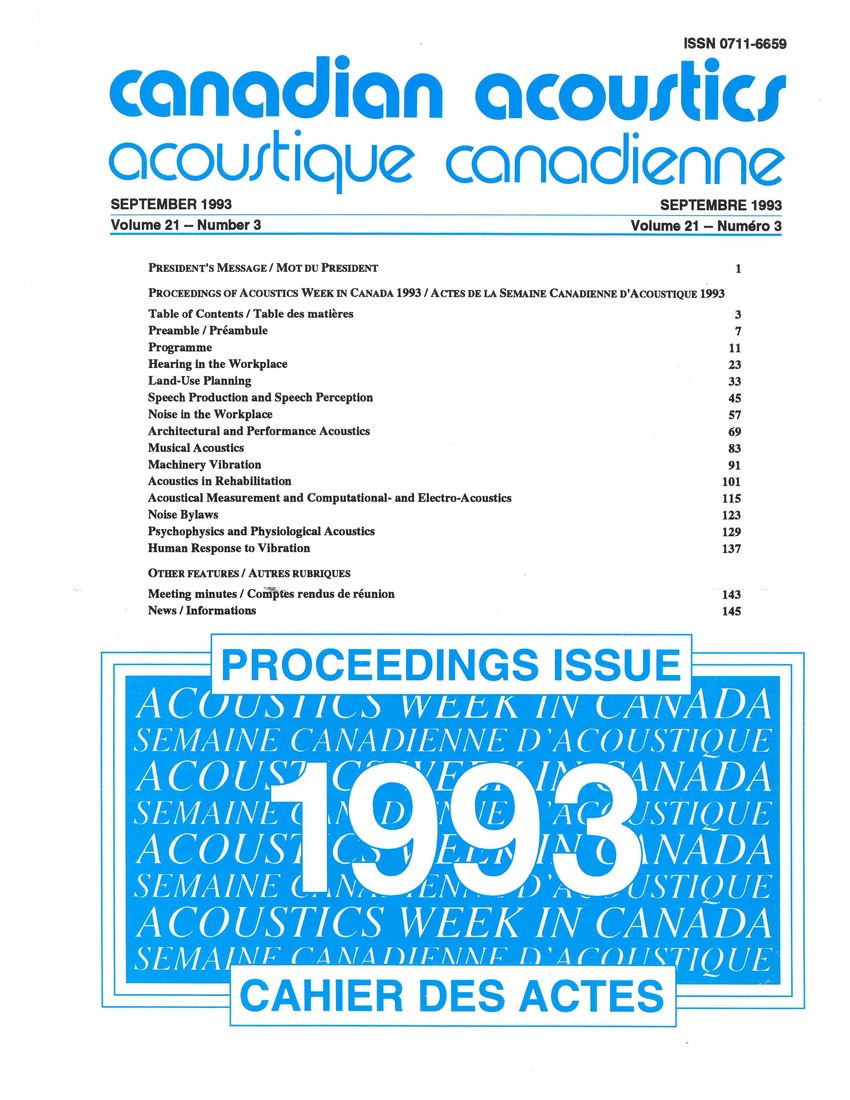Auditory distortion measures for coded speech quality evaluation
Keywords:
hearing, hidden Markov models, neurophysiology, speech coding, speech intelligibility, speech synthesis, synthesized speech, auditory distortion measures, coded speech quality evaluation, bit-rate coder, perceptual-domain, probability-of-firing, neural channels, cochlear model, hidden Markovian measures, speech coder analysisAbstract
Distortion measure plays an important role in the quality evaluation of coded speech synthesized by a medium or low bit-rate coder. The quantification of distortion involves mapping the signal onto an appropriate domain and formulating a suitable comparison in that domain. In our work, both original speech and its coded version are transformed from the time-domain to a perceptual-domain (PD) using an auditory (cochlear) model. This PD representation provides information pertaining to the probability-of-firing in the neural channels at different clock times. This article proposes two distinct approaches to process these information and measure the degree of distortion in coded speech. The remainder of the article is organized as follows. The author describes the Lyon's cochlear model introduces the idea of cochlear discrimination information and hidden Markovian measures, and studies their use in coded speech quality evaluation. The author proposes their use in some applications of speech coder analysisAdditional Files
Published
How to Cite
Issue
Section
License
Author Licensing Addendum
This Licensing Addendum ("Addendum") is entered into between the undersigned Author(s) and Canadian Acoustics journal published by the Canadian Acoustical Association (hereinafter referred to as the "Publisher"). The Author(s) and the Publisher agree as follows:
-
Retained Rights: The Author(s) retain(s) the following rights:
- The right to reproduce, distribute, and publicly display the Work on the Author's personal website or the website of the Author's institution.
- The right to use the Work in the Author's teaching activities and presentations.
- The right to include the Work in a compilation for the Author's personal use, not for sale.
-
Grant of License: The Author(s) grant(s) to the Publisher a worldwide exclusive license to publish, reproduce, distribute, and display the Work in Canadian Acoustics and any other formats and media deemed appropriate by the Publisher.
-
Attribution: The Publisher agrees to include proper attribution to the Author(s) in all publications and reproductions of the Work.
-
No Conflict: This Addendum is intended to be in harmony with, and not in conflict with, the terms and conditions of the original agreement entered into between the Author(s) and the Publisher.
-
Copyright Clause: Copyright on articles is held by the Author(s). The corresponding Author has the right to grant on behalf of all Authors and does grant on behalf of all Authors, a worldwide exclusive license to the Publisher and its licensees in perpetuity, in all forms, formats, and media (whether known now or created in the future), including but not limited to the rights to publish, reproduce, distribute, display, store, translate, create adaptations, reprints, include within collections, and create summaries, extracts, and/or abstracts of the Contribution.


